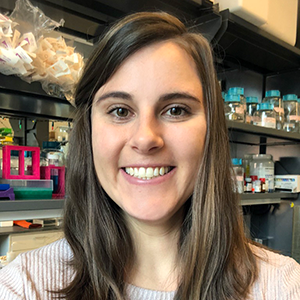JLR: How a single-cell marine organism makes fatty acids
Omega-3 fatty acids have been heralded as crucial to our health and well-being. Humans and other mammals cannot synthesize these fatty acids on their own. Organisms capable of synthesizing these important molecules, such as a single-celled marine organism called Thraustochytrium, are of interest for their use as dietary supplements. In a recent paper published in the Journal of Lipid Research, Dauenpen Meesapyodsuk and Xiao Qiu of the University of Saskatchewan in Canada report the pathway that is responsible for the synthesis of these fatty acids in Thraustochytrium.

Omega-3 fatty acids, which can be categorized as very long chain polyunsaturated fatty acids, known as VLCPUFAs, are important components of cell membranes. They also form products that are involved in blood circulation, metabolism, neurotransmission and inflammation. Mammals can obtain omega-3 fatty acids from foods such as salmon and walnuts or from dietary supplements.
Thraustochytrium has been used as a commercial source for these healthy fatty acids. Scientists knew that these organisms produced large quantities of VLCPUFAs but didn’t know exactly how they did it.
Organisms are thought to synthesize VLCPUFAs through two possible pathways. The first is the aerobic pathway. It requires oxygen and involves lengthening and adding double bonds to existing fatty acid intermediates. The second is the anaerobic pathway. It does not require oxygen and uses specific enzymes to build VLCPUFAs directly from small precursor molecules, such as acetate.
Qiu’s laboratory previously had demonstrated the presence of an enzyme involved in the aerobic pathway in a species of Thraustochytrium called Thraustochytrium sp. 26185. They also recently had observed the coexistence of the anaerobic pathway in the same organism. “This prompted us to investigate the function and importance of the two pathways for the biosynthesis of VLCPUFAs in the species,” explains Qiu.
Qiu and Meesapyodsuk investigated the pathways by analyzing the important genes of each in E. coli or yeast, which essentially served as a blank slate to isolate the Thraustochytrium genes and examine their function. They used gas chromatography coupled to mass spectrometry to analyze fatty acid structure; they used feeding experiments to track VLCPUFA formation.
The data “show that the anaerobic pathway is responsible for the VLCPUFA biosynthesis in the Thraustochytrium,” states Qiu. Thraustochytrium uses enzymes to build the VLCPUFAs sequentially from a small base molecule instead of making modifications to existing PUFAs.
What about the aerobic synthesis pathway that also was shown to be present in the same species? “Although both aerobic and anaerobic pathways for biosynthesis coexist in the Thraustochytrium, the aerobic pathway is not complete,” explains Qiu. This pathway has several enzymes that are ineffective. This makes it incapable of generating VLCPUFAs.
There is a simple explanation for why both pathways may exist in a species — evolution. “It is believed that the aerobic pathway is a progenitor system, while the anaerobic pathway is later acquired by the species,” explains Qiu. The anaerobic pathway is more efficient at producing VLCPUFAs. As time went on, components of the less effective aerobic pathway could have become unnecessary and been lost.
VLCPUFAs are important for our health, so it is important to understand how they are produced in the organisms we rely on to supplement our diets. This knowledge could in turn help engineer similar systems that produce VLCPUFAs. Qiu says, “Metabolic engineering of VLCPUFAs in heterologous systems (could) provide an alternative source of these fatty acids for human and animal consumption.”
Enjoy reading ASBMB Today?
Become a member to receive the print edition four times a year and the digital edition monthly.
Learn moreGet the latest from ASBMB Today
Enter your email address, and we’ll send you a weekly email with recent articles, interviews and more.
Latest in Science
Science highlights or most popular articles

Exploring the link between lipids and longevity
Meng Wang will present her work on metabolism and aging at the ASBMB Annual Meeting, March 7-10, just outside of Washington, D.C.

Defining a ‘crucial gatekeeper’ of lipid metabolism
George Carman receives the Herbert Tabor Research Award at the ASBMB Annual Meeting, March 7–10, just outside of Washington, D.C.

The science of staying strong
Muscles power every movement, but they also tell the story of aging itself. Scientists are uncovering how strength fades, why some species resist it and what lifestyle and molecular clues could help preserve muscle health for life.

Bacteriophage protein could make queso fresco safer
Researchers characterized the structure and function of PlyP100, a bacteriophage protein that shows promise as a food-safe antimicrobial for preventing Listeria monocytogenes growth in fresh cheeses.

Building the blueprint to block HIV
Wesley Sundquist will present his work on the HIV capsid and revolutionary drug, Lenacapavir, at the ASBMB Annual Meeting, March 7–10, in Maryland.

Gut microbes hijack cancer pathway in high-fat diets
Researchers at the Feinstein Institutes for Medical Research found that a high-fat diet increases ammonia-producing bacteria in the gut microbiome of mice, which in turn disrupts TGF-β signaling and promotes colorectal cancer.

